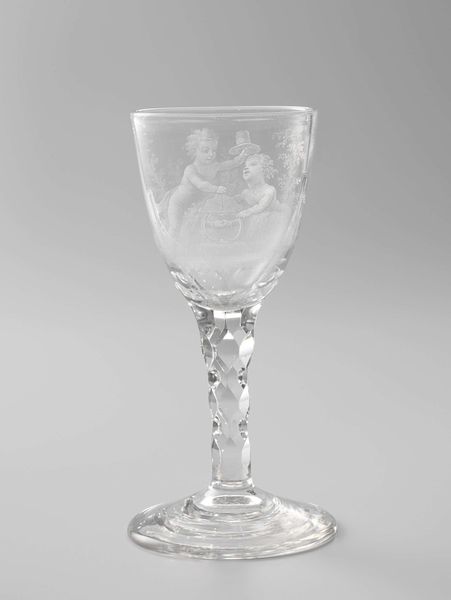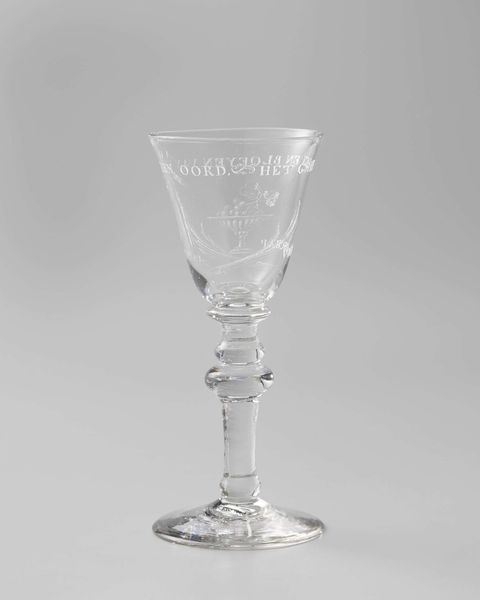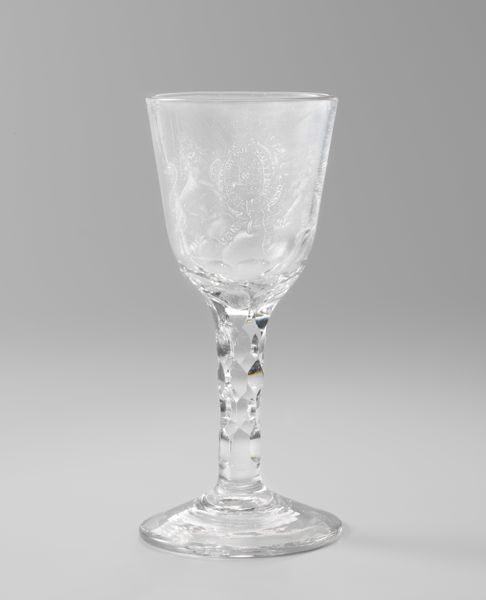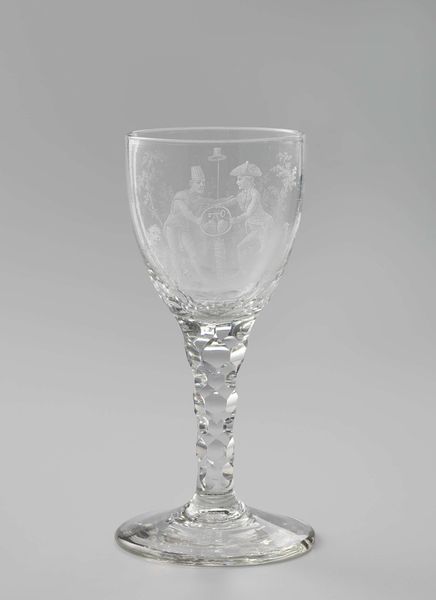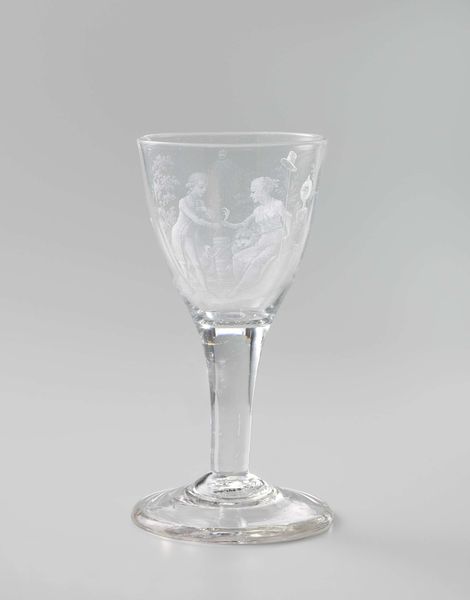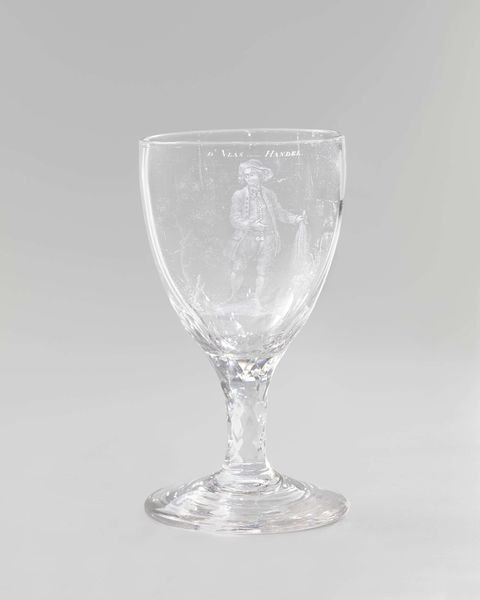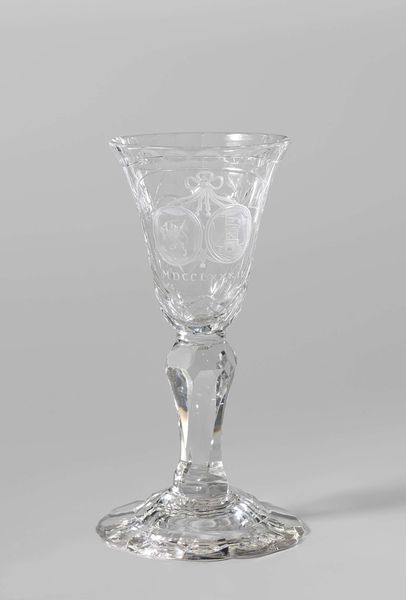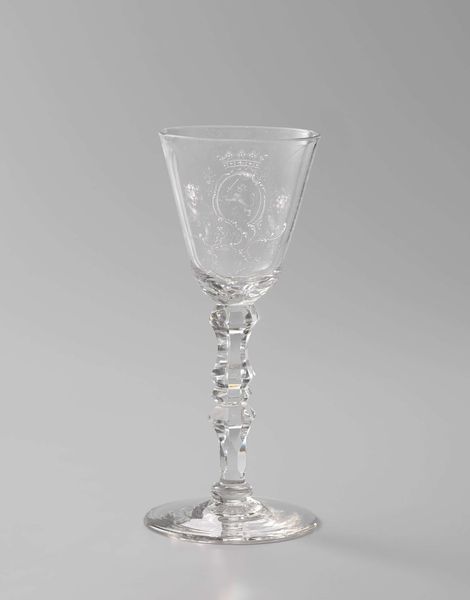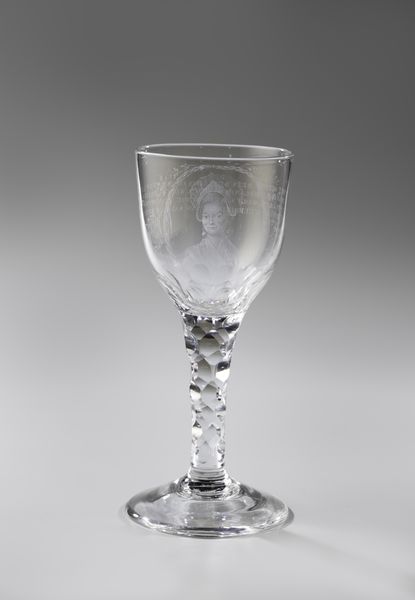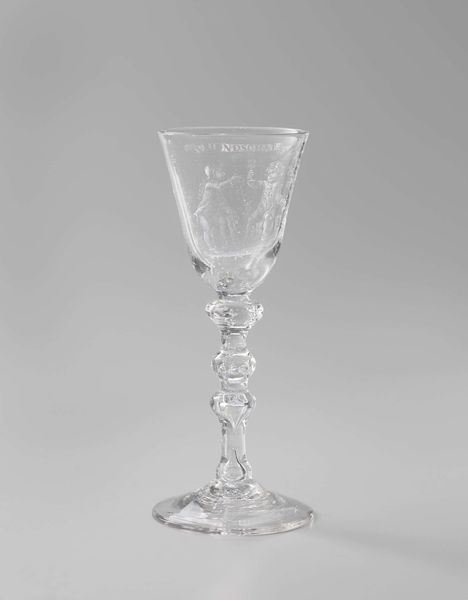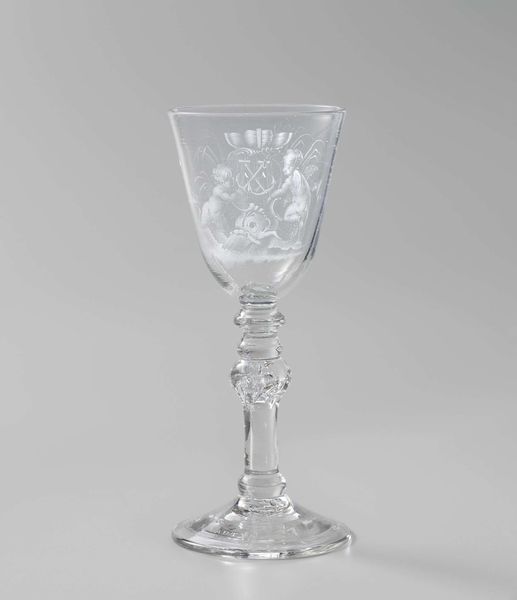
Dimensions: height 17.8 cm, diameter 8.5 cm, diameter 8.5 cm
Copyright: Rijks Museum: Open Domain
Curator: Here we have a rococo kelkglas, or goblet, created around 1775. Its delicate engraving depicts three children beneath a banner inscribed with "L'Amitié" - friendship in French. Editor: The translucence gives it an ethereal quality, as if friendship itself is a fragile and precious thing. Curator: Precisely. Glassmaking during this period was a sophisticated process, involving precise control of temperature and chemical composition to achieve this clarity. Engraving required a skilled artisan, someone who could master the nuances of light and shadow on a curved surface. Did it have a designated space and context within convivial settings? Editor: Absolutely, these figures embody rococo aesthetics, that emphasis on playfulness, affection, and the idealized image of childhood, think of cupid-like forms. Notice how they’re clustered, intertwined, it's a deliberate construction that links the visual symbol with ideas around connection, almost like an emblem to treasure bonds among one another, something deeper than superficial pleasure. Curator: What interests me, beyond the overt symbolism, is the question of labor. How many hands touched this piece from the initial glassblowing to the final engraving? Each person contributes not just labor, but also some form of authorship to its creation. This wasn't a mass produced piece, so imagine its first commissioning or eventual sales, as well. Editor: I see what you mean; a history of skill sets within that materiality is important. And the sentiment that glass attempts to communicate is tied to shared, remembered or lived cultural meaning. This glass could have graced tables at momentous celebrations. Did it commemorate friendships during key transitional moments? How can objects carry communal emotions and experiences across time? Curator: Precisely, so understanding that this isn't solely about high art is important, so too how the social and economic context impacted production and reception for future generations to recognize friendship on rococo forms today. Editor: Right. It transforms into more than simply decoration, turning into an emotionally charged witness to a specific historical milieu. It encourages reflection about human connections then and now, through how visual language becomes crystallized for generations later on. Curator: Thank you, what fascinating aspects, seeing both form and production in conversation! Editor: My pleasure, thinking how symbols evolve from then to now!
Comments
No comments
Be the first to comment and join the conversation on the ultimate creative platform.
